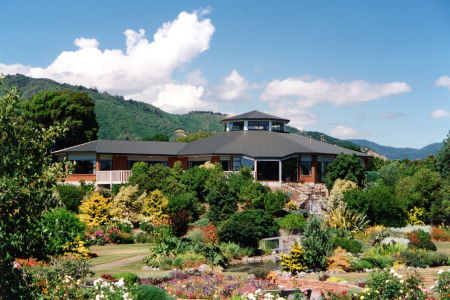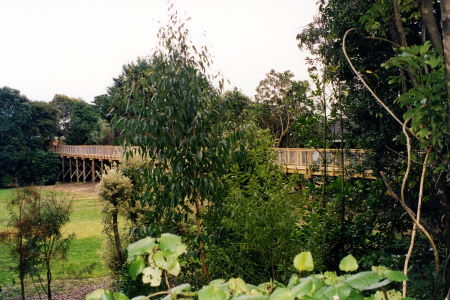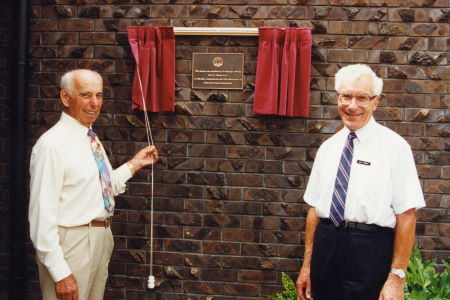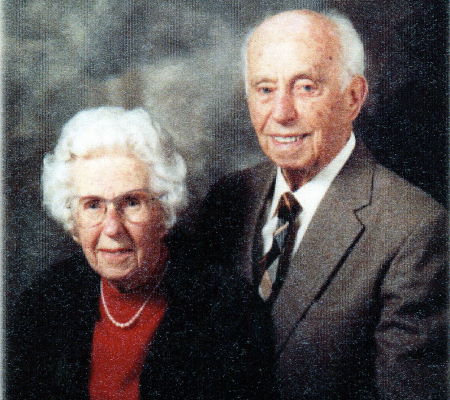Parkwood Village hostesses were part of the original village concept. Miss Mattinson was initially appointed as a part time receptionist, which evolved into receptionist/hostess. Miss Margaret Harvey took up the first full time hostess position in January 1984, her role including assistance with physical problems, arranging for meals to be delivered to the home of convalescent residents and identifying residents who were unwell but had not sought help, as well as arranging outings and informal get togethers. Mrs Trish Frye, a registered nurse who lived locally, was soon appointed as an assistant and was able to share being on call should a resident have a fall or other accident during the night. Miss Harvey resigned in 1992 and Mrs Frye was appointed Senior Hostess until her retirement at the end of 2005. In 2006 the hostesses became known as Village Carers, and this team of enrolled and registered nurses is very high on the list of reasons why residents choose Parkwood Village as their retirement destination.

The latter part of the 1980s was marked by financial instability worldwide, with share markets quite severely affecting markets as small as New Zealand with consequential flow on effects. In the 1990s there were philosophical differences within the Board. Some considered reduction of debt of paramount importance while others felt strongly that promises regarding ongoing improvement to material aspects of Parkwood Village should be honoured, particularly in relation to the building of a social centre in the Woodlands side of the community.
It was a time of concern to the trustees, but eventually sufficient finance was found to enable the architect to draw up plans and call for tenders for the building of a centre on the prime area of land above Tui Dell between Wren and Pukeko Streets, with a large car park and an exit leading to Ngarara Road. This land had been “saved” by Lloyd Parker, and the Lloyd Parker Plateau Centre was officially opened on 21 February 2001 by Governor General Sir Michael Hardie-Boys.
Once the Plateau Centre had been completed and was in use, the Fitness Centre was added. This small complex included a modified therapeutic swimming pool and a small gymnasium, and Lloyd was delighted that another of his visions had been completed.

A beautiful raised boardwalk, wide enough to allow the use of mobility scooters, was also built connecting Bellbird Crescent with the Plateau Centre.
The availability of a community bus made life easier for non-drivers amongst residents. The service runs between Parklands and Woodlands for midday meal times, to the Waikanae shops and Coastlands in Paraparaumu regularly and also operates for special functions.
With the development of Tui Dell, houses were built around the perimeter in Pukeko Street and Penguin Grove, giving residents a superb overview of the gardens below their homes. This left only the development of the Ngarara end of Wren Street and Fantail Close to complete the housing aspect of the village’s development. This area comprised sand dunes and swamp, both to a considerable depth, which can be seen by the position of the transmission towers that sit on the original base. Land at the lower end of Sylvan Avenue was purchased by the Trust in 2000 and four villas were built bordering Sylvan Avenue and Privet Grove.
Parkwood Lodge was awarded ISO 9002 certification in October 1996, ensuring that Parkwood was again a leader in the retirement/aged care industry.
Fuller Tredgett, who had been the Residents’ Association representative on the Trust Board for many years, left his considerable estate to Parkwood Trust to be used in relation to the grounds and gardens. Among other benefits, this enabled a facility to be purpose built for the gardeners in 2005/06 that is large enough to house tractors, machinery and other materials required in the maintenance of the extensive Parkwood gardens. A Memorial Garden to Doris and Fuller Tredgett was also developed off Wren Street beside the lagoon, which offers a tranquil place to rest and remember the gentle people who gave it.
Lloyd Parker may not have been an overtly religious man. However, there can be no doubt his upbringing in a Methodist parsonage shaped his life and all the decisions he made concerning home and community. From earliest days of developing the concepts on which Parkwood was built, he frequently spoke of the need to include in the village’s design a “quiet room”. He did not envisage this as necessarily a place for religious activities, nor one identified with any particular religion or faith, but rather a simple building, serene and accessible to all who needed time to reflect, to grieve, to pray and to be comforted by the absence of formal activity. Lloyd’s vision was realised when Betty Kennedy left her estate to the Trust, and the Betty Kennedy Quiet Room was built within Parkwood Lodge. The roof of Parkwood Lodge was also replaced with the balance of Betty’s bequest.
Celebrations to mark the 25th anniversary of the founding of Parkwood Village were held over a week in February 1996, including a dinner at which everyone present was invited to keep the wine glass they had used, etched with Parkwood’s symbol of three trees.
On 1 January 2000, a time capsule was prepared, sealed and buried, and a commemorative brass plaque put in place, to be opened on the 50th anniversary celebrations.


Lloyd left his beloved village for the last time on 18 April 2004, his wife Joan having predeceased him by 18 months. Lloyd left the community not only Parkwood Retirement Village, which was his dream, but also the concept accepted at that first meeting of interested persons: “That everyone was entitled to live out their later years in a peaceful environment amongst friends and to be cared for by persons who would respect their dignity”. Following Lloyd’s death, many residents and others expressed the wish that a permanent memorial be created. However in his life Lloyd had expressed strongly that he did not desire such a memorial, so the matter was resolved by:
- Setting up a memorial scholarship for which any staff member could apply, provided their proposal would result in improvement in their own practice (eg nursing, catering, gardening, etc) and would ultimately benefit Parkwood.
- Commissioning a series of photo montages of the stages through which the village had moved, which were created and are displayed in the social centres and other areas.
- Naming the social centre in Woodlands the Lloyd Parker Plateau Centre.
Some readers may wonder why no reference is made to the many interesting and distinguished people who have been, and are, residents of Parkwood. That they are not referred to lies in that phrase, “he was a man of stature but one who walked humbly”. Lloyd believed that every person who resided in Parkwood and enjoyed its many amenities deserved “to live amongst friends and to be treated with respect and dignity”. There can be no greater memorial than that he lived his own long life accordingly.
This section has been adapted from A Place called Parkwood, by Margaret Lythgoe, a history of Parkwood published in 2007.
